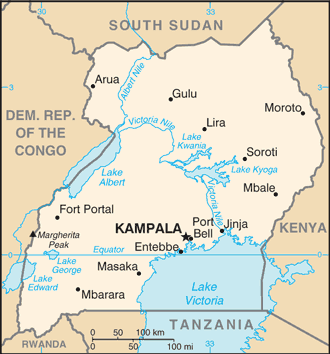Correction: There are 42 contacts, not suspect cases. There are 2 confirmed cases as of the time of this report.
The World Health Organization (WHO) says 42 suspected cases of Crimean-Congo haemorrhagic fever have been detected in the Nakivale Refugee Settlement in northern Uganda.

In its latest epidemiological analysis, WHO said the first case, involving a female who came from Rwanda through the Democratic Republic of Congo, was confirmed by the Uganda Virus Research Institute on July 18.
“She presented with a four-day history of fever and a bleeding diathesis on 7 July 2018. By 17 July 2018 the husband of the index case had tested positive for CCHF. No deaths have been reported and both cases are in isolation at the Mbarara Regional Referral Hospital,” the WHO said.
Meanwhile, the WHO has says at least 3 out of 8 suspected cases of Rift Valley Fever (RVF) have died since the outbreak was confirmed at a farm in the Nakivale Refugee Camp on June 28.
Efforts to identify the source of the outbreak are still underway. Teams from the government and the WHO are working on outbreak responses. As of 17 July 2018, samples had been taken from 125 animals including 95 cattle, 27 goats and 3 sheep.
“Case management is being provided at the isolation facility at Mbarara Regional Referral Hospital, and health workers are being instructed by clinicians deployed as part of the RRT. Affected districts are being prepared to manage cases at source,” the WHO said.
- Denver patient tests negative for Ebola
- Typhoid cases up in El Salvador in 2018
- Boston officials issue measles alert
- Malaysia reports HFMD fatality in Sarawak child
- CDC warns travelers to Somalia of polio risk
- Alabama: 3 horses test positive for Eastern Equine Encephalitis
- Bahamas: Vibrio cases linked to conch in the dozens
- myLymeTest: Lyme Disease Testing is Now Available to Canadian Customers



Are there 42 cases or 42 CONTACTS . My interpretation – 2 cases, 42 contacts
” A total of 42 contacts were listed on 17 July 2018, all household and close community contacts to both confirmed cases.
“http://apps.who.int/iris/bitstream/handle/10665/273497/OEW30-2127072018.pdf
Hi Irene,
Thanks for pointing out that error.
Thanks
Robert